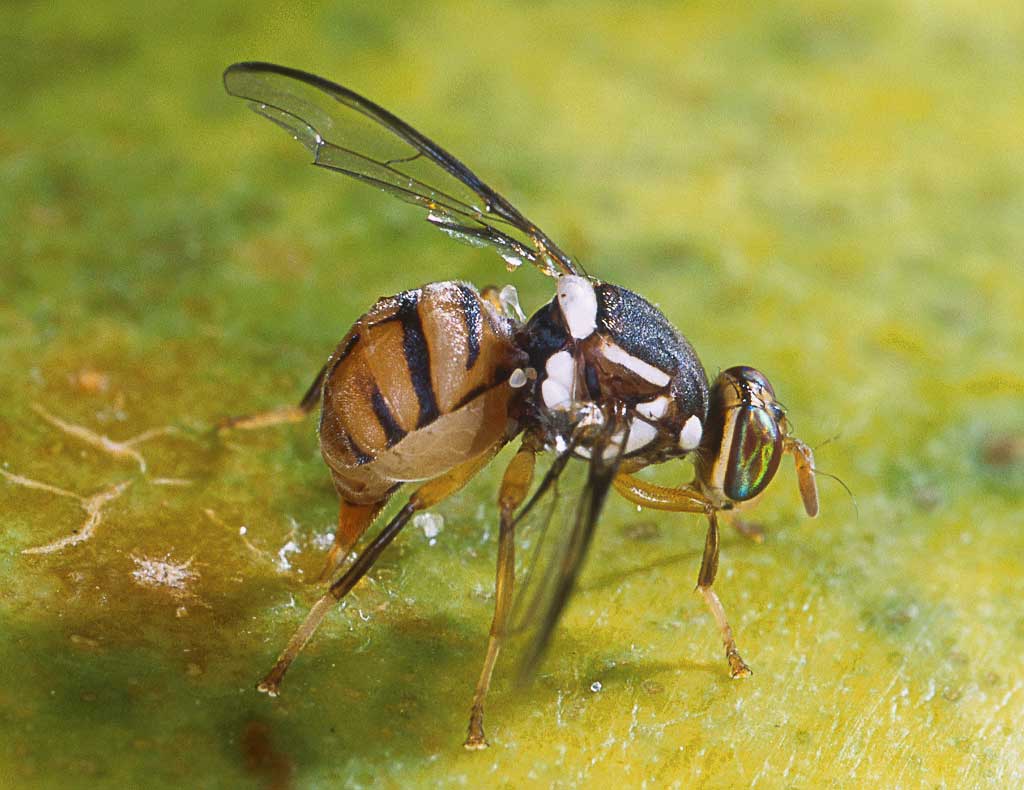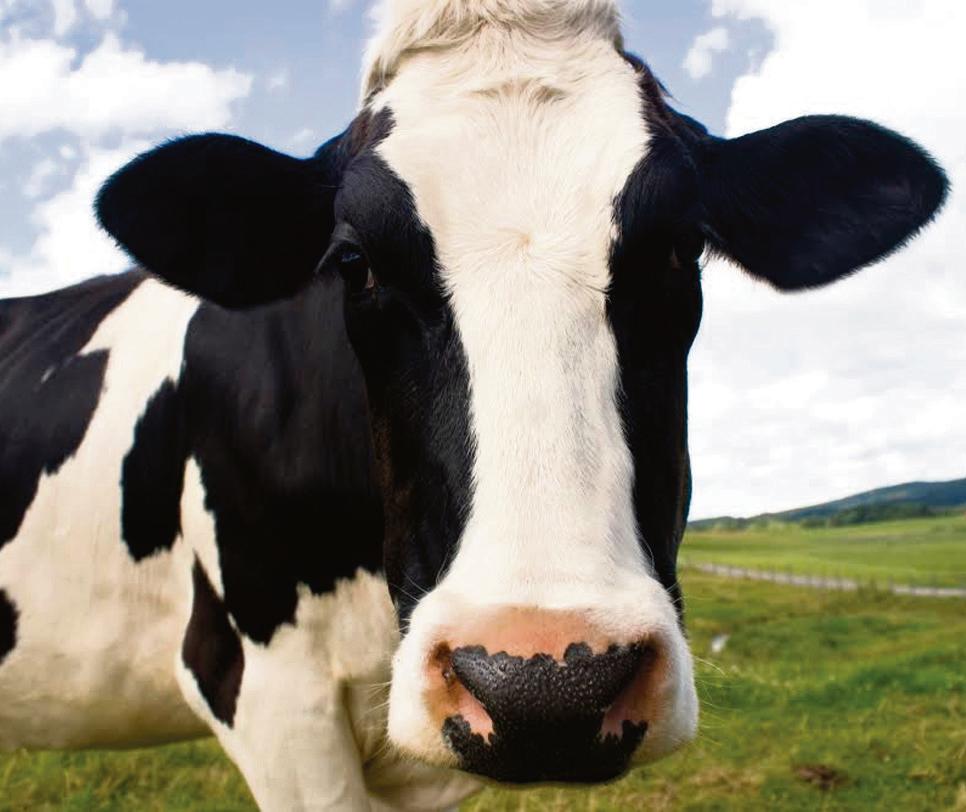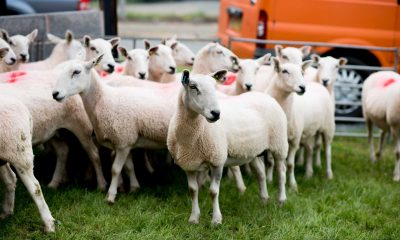Farming
Global plant pest standards agreed

THE BODY charged with keeping global trade in plants and plant products safe has adopted several new phytosanitary standards aimed at preventing destructive agricultural and environmental pests from jumping borders and spreading internationally.
The standardized norms developed by the International Plant Protection Convention (IPPC) cover a range of strategies and techniques used to prevent the introduction and spread of plant diseases and pests to new environments, thereby avoiding their often-devastating impacts on biodiversity, food security and trade.
“This is challenging work with high stakes: each year an estimated 10-16 percent of our global harvest is lost to plant pests. A loss estimated at $220 billion,” FAO Deputy Director-General Maria Helena Semedo said at the opening of this year’s IPPC annual meeting in Rome.
Some $1.1 trillion worth of agricultural products are traded internationally each year, with food accounting for over 80 percent of that total, according to FAO data.
New measures adopted this week by the IPPC’s governing body, the Commission on Phytosanitary Measures(CPM), include:
Standard on the use of various temperature treatments against agricultural pests. The standard aims at ensuring that such treatments are consistently and effectively used in different operational contexts.
The norm covers cold treatment techniques that freeze and kill pests as well as those that raise temperatures past their survival threshold. This can be achieved by submerging them in extremely hot water or exposing them to super-heated steam (for commodities vulnerable to drying out, such as fruits, vegetables or flower bulbs) or dry heat (ideal for low moisture-content items such as seeds or grain).
Revised standard for sanitation of wood packing materials. An existing standard, known as ISPM-15, was updated to include the use of sulphuryl fluoride — a gas insecticide — and new-generation heating technologies that employ microwave and radio frequency waves to generate pest-killing temperatures deep inside wood products.
An expanded standard on the use of heat vapour to kill Oriental Fruit Flies. The highly destructive, fruit-attacking Bactrocera dorsalis originated in Asia but has now spread to at least 65 countries. Its presence in Africa, where it first appeared in 2003, costs the continent an estimated $2 billion in annual losses due to fruit export bans. The control technique outlined under the new measure kills 99.98% of the bug’s eggs and larvae when used correctly.
The IPPC Commission also approved revisions that streamline existing standards targeting fruit flies to make it easier for countries to comply with them and improve their effectiveness, as well as revisions to a standard that establishes best-practice benchmarks for the operation of national pest surveillance programs.
And it endorsed new diagnostic protocols for sudden oak death, a fungi-like organism of unknown origin that attacks a wide range of trees and shrubs in nurseries, introduced into western North America and western Europe through the ornamental plants trade. And it approved new diagnostic protocol for tospoviruses, which affect 1,000 plant species and are causing devastating losses, especially to tomato, potato and squash and cucumber yields.
BENEFITS AND RISKS OF GLOBAL TRADE
The dangerous hitchhikers carried by global trade — plant pests and diseases — once introduced into new environments can quickly take root and spread, impacting food production and causing billions in economic damages and control cost. One recent study in East Africa, for instance, found that just five invasive alien species could be causing as much as $1.1 billion in economic losses annually to smallholder farmers in the region.
Not only can fruits, crops and seeds become infected, but the containers and boxes they travel in, as well. Packaging for overseas shipments is commonly constructed from wood, which is relatively inexpensive, and easily manufactured — but also easily infested with a variety of bark and wood pests, and so act as a vector. Timber and wood-made products like furniture can harbour stowaways, also.
This means that not only are food crops at risk, but forests and trees as well. Recent studies shared during this week’s meeting have shown that the loss of tree cover due to invasive pests may result in an increase in stress related-diseases and possibly elevated human mortality rates.
In another example, the Republic of Korea was recently forced to cut down some 3.5 million trees as a result of the pinewood nematode, and over the past three decades has spent nearly a half a billion dollars on control programs to fight this deadly pest. Additional sums have been spent in Canada and the United States in attempts to stop the thus far unstoppable Emerald Ash Borer.
The need to contain threats such as these are why the IPPC was established in 1952. Since then, it has promulgated some 100 standards covering a broad range of phytosanitary issues. It also runs a number of programs that work to share information on best-practices and build the capacity of developing countries to manage plant diseases and pests, both at home and in trade flows.
Farming
Welsh Conservatives warn climate plans could mean fewer livestock on Welsh farms

THE WELSH CONSERVATIVES have challenged the Welsh Government over climate change policies they say could lead to reductions in livestock numbers across Wales, raising concerns about the future of Welsh farming.
The row follows the Welsh Government’s decision, alongside Plaid Cymru and the Welsh Liberal Democrats, to support the UK Climate Change Committee’s Fourth Carbon Budget, which sets out the pathway towards Net Zero greenhouse gas emissions by 2050.
The Carbon Budget, produced by the independent Climate Change Committee (CCC), states that meeting Net Zero targets will require a reduction in agricultural emissions, including changes to land use and, in some scenarios, a reduction in livestock numbers.
During questioning in the Senedd, the Welsh Conservatives pressed the Deputy First Minister and Cabinet Secretary for Climate Change and Rural Affairs on whether the Welsh Government supports reducing livestock numbers as part of its climate strategy.
Speaking after the exchange, Welsh Conservative Shadow Cabinet Secretary for Rural Affairs, Samuel Kurtz MS, said the Welsh Government could not distance itself from the implications of the policy it had backed.
Mr Kurtz said: “By voting in favour of these climate change regulations, Labour, Plaid Cymru and the Liberal Democrats have signed up to the UK Climate Change Committee’s call to cut livestock numbers in Wales, and they cannot dodge that reality.
“The Deputy First Minister’s smoke-and-mirrors answers only confirm what farmers already fear: that Labour, along with their budget bedfellows in Plaid and the Lib Dems, are prepared to sacrifice Welsh agriculture in pursuit of climate targets.”
He added that the issue came at a time of growing pressure on the farming sector, pointing to uncertainty over the proposed Sustainable Farming Scheme, the ongoing failure to eradicate bovine TB, nitrogen pollution regulations under the Nitrate Vulnerable Zones (NVZs), and proposed changes to inheritance tax rules affecting family farms.
The Welsh Government has repeatedly said it does not have a target to forcibly reduce livestock numbers and has argued that future emissions reductions will come through a combination of improved farming practices, environmental land management, and changes in land use agreed with farmers.
Ministers have also said the Sustainable Farming Scheme, which is due to replace the Basic Payment Scheme, is intended to reward farmers for food production alongside environmental outcomes, rather than remove land from agriculture.
The UK Climate Change Committee, which advises governments across the UK, has stressed that its pathways are based on modelling rather than fixed quotas, and that devolved governments have flexibility in how targets are met.
However, farming unions and rural groups in Wales have warned that policies focused on emissions reduction risk undermining the viability of livestock farming, particularly in upland and marginal areas where alternatives to grazing are limited.
The debate highlights the growing tension between climate targets and food production in Wales, with livestock farming remaining a central part of the rural economy and Welsh cultural identity.
As discussions continue over the final shape of the Sustainable Farming Scheme and Wales’ long-term climate plans, pressure is mounting on the Welsh Government to reassure farmers that climate policy will not come at the expense of the sector’s survival.
Farming
FUW Insurance Services appoints Paul Jameson as non-executive director

Experienced insurance and risk specialist joins board as long-serving director retires
FUW INSURANCE SERVICS LTD, Wales’ leading specialist agricultural insurance broker, has announced the appointment of Dr Paul Jameson as a non-executive director.
Dr Jameson brings extensive experience in insurance and risk management, having worked as an actuary and senior executive within subsidiaries of major global insurers including Allianz, Munich Re, Legal & General and Wakam. He has held chief risk officer roles since 2020.
During his career, Dr Jameson has led multidisciplinary teams spanning actuarial services, risk management, compliance, audit, legal and marketing approvals, giving him broad experience in both strategic oversight and operational governance.
Speaking following his appointment, Dr Jameson, who lives in Colwyn Bay, North Wales, said he was looking forward to supporting the farming sector in Wales.
He said: “I am delighted to join FUW Insurance Services and would like to thank Ann, Guto and the rest of the team for their warm welcome.
“I have been impressed by the passion and commitment of the board to the farming community, and by its ambition to grow and diversify the insurance business. I am keen to support the farming profession and help ensure the continued success of the sector in Wales, particularly during periods of economic and geopolitical uncertainty.
“I hope my experience in the insurance sector will help the business build on its successes and continue to grow, especially as it explores new commercial opportunities and innovative avenues for expansion.”
Ann Beynon OBE, chair of the FUW Insurance Services board, said Dr Jameson’s expertise would be a significant asset to the organisation.
She said: “We are delighted to welcome Dr Paul Jameson to the board. His depth of experience in insurance and his understanding of risk management will be invaluable as we continue to develop and diversify our services.
“Paul’s insight and strategic perspective will help us navigate a changing insurance market, identify new opportunities for innovation and growth, and strengthen the services we provide to our customers.”
Dr Jameson’s appointment follows the retirement of Ken Isherwood, who has stepped down from the board after more than a decade of service.
Paying tribute, Ann Beynon said: “Ken’s integrity, wisdom and deep knowledge of the insurance industry have underpinned much of our success.
“It has been a privilege to work alongside him, and we wish him every happiness in his well-earned retirement.”
Community
Badger Trust launches manifesto ahead of 2026 Senedd elections

THE BADGER TRUST has published a new Cymru Badger Manifesto calling on candidates standing in the 2026 Senedd elections to commit to a science-led approach to bovine tuberculosis (bTB) and to maintain Wales’ current policy of not culling badgers.
The manifesto, released on Wednesday (Dec 10) as part of the charity’s Badgers Belong Here / Mae Moch Daear yn Perthyn Yma campaign, sets out the organisation’s position on badger protection, wildlife crime and bTB control, and urges politicians to reject calls for the reintroduction of culling in Wales.
Badger Trust argues that political decisions taken during the next Senedd term will be critical to the future of badgers, which it describes as culturally and ecologically significant to Wales. The charity says badgers have been present in Wales for more than 250,000 years and remain part of Welsh folklore, place names and rural identity.
Five key commitments
The manifesto outlines five commitments the charity is asking Senedd candidates to support, including defending what it describes as science-led policy on bTB, challenging misinformation in public debate, strengthening enforcement against wildlife crime, recognising badgers as part of Welsh heritage, and supporting local volunteer badger groups.
According to Badger Trust, 140 incidents of badger-related wildlife crime have been recorded in Wales since 2020, which it says highlights the need for improved reporting and enforcement.
The charity also points to the work of six active badger groups across Wales, which it says assist with rescuing injured animals, monitoring setts, recording road casualties and supporting local authorities.
bTB policy in Wales and England
Wales has not carried out widespread badger culling as part of its bTB control strategy, instead focusing on cattle testing, biosecurity measures and herd management.
Badger Trust claims that new herd incidents of bTB in Wales fell by more than 40% between 2010 and 2024, which it attributes to cattle-based controls rather than wildlife intervention.
The charity contrasts this with England, where it says almost 250,000 badgers have been culled over the past decade as part of bTB control programmes. It argues that bTB rates in England remain higher than in Wales and that the evidence does not show culling alone to be responsible for reductions in disease.
Disputed claims over culling
The manifesto challenges the frequently cited claim that badger culling in England led to a 56% reduction in bTB in cattle. Badger Trust says this figure has been misinterpreted and that studies cited in support of culling also involved additional measures such as enhanced cattle testing and biosecurity.
The charity points to statements from researchers and official correspondence which, it says, indicate that reductions in bTB cannot be attributed solely to culling.
Supporters of culling, including some farming groups, continue to argue that wildlife control should remain an option as part of a wider disease management strategy, particularly in areas with persistent infection. The Welsh Government has previously said it keeps its bTB policy under review in line with emerging evidence.
Call to candidates
Nigel Palmer, CEO of Badger Trust, said Wales demonstrated that bTB could be tackled without killing wildlife.
He said: “Wales is a world-leading example of how to address bovine TB through evidence-based policy. The progress made here shows that culling is not necessary, and we urge Senedd candidates to stand by the science.”
The manifesto is available in both Welsh and English and will be circulated to political parties and candidates ahead of the 2026 election.
-

 Crime3 days ago
Crime3 days agoMilford Haven man jailed after drunken attack on partner and police officers
-

 News6 days ago
News6 days agoDyfed-Powys Police launch major investigation after triple fatal crash
-

 Crime3 days ago
Crime3 days agoTeenager charged following rape allegation at Saundersfoot nightclub
-

 Crime4 days ago
Crime4 days agoMan charged with months of coercive control and assaults
-

 Crime5 days ago
Crime5 days agoMan sent to Crown Court over historic indecent assault allegations
-

 Crime7 days ago
Crime7 days agoMan spared jail after baseball bat incident in Milford Haven
-

 Crime5 days ago
Crime5 days agoMilford Haven man admits multiple offences after A477 incident
-

 Crime4 days ago
Crime4 days agoWoman ‘terrified in own home’ after ex breaches court order

































